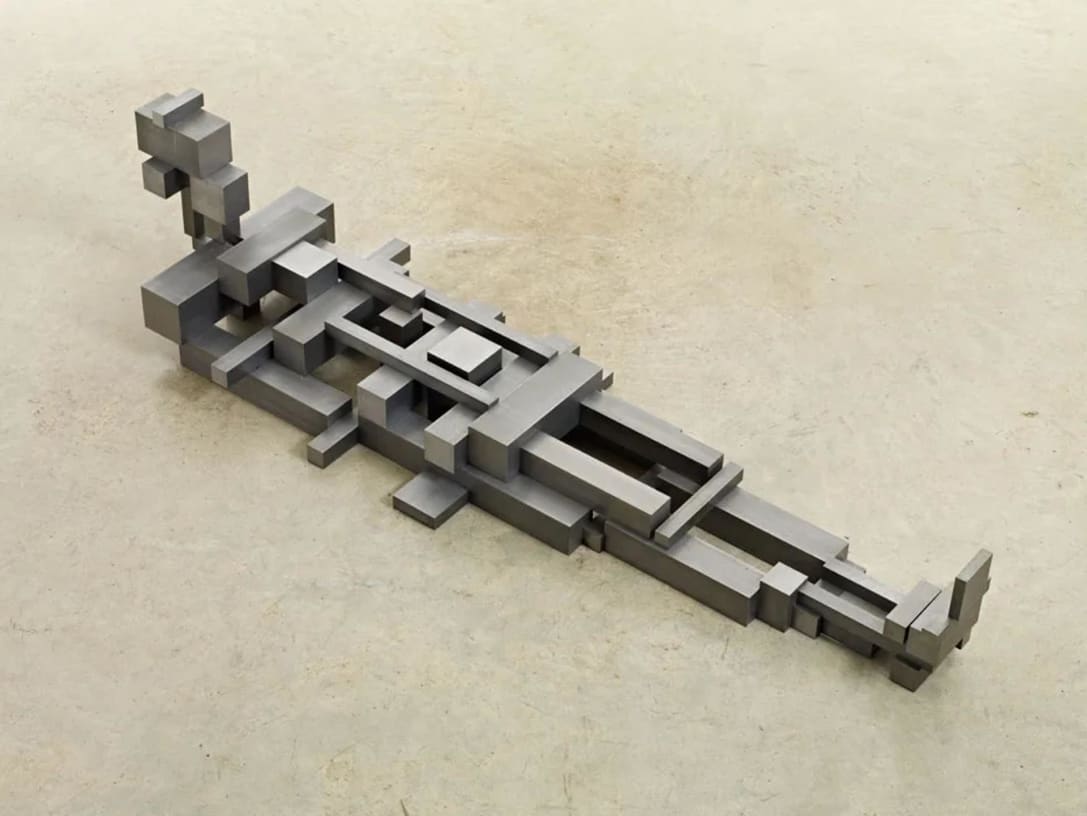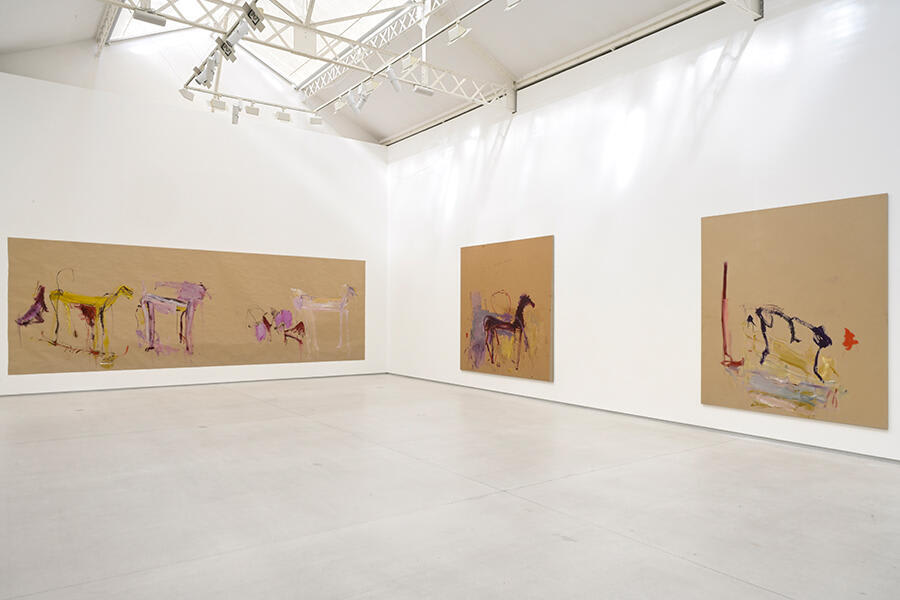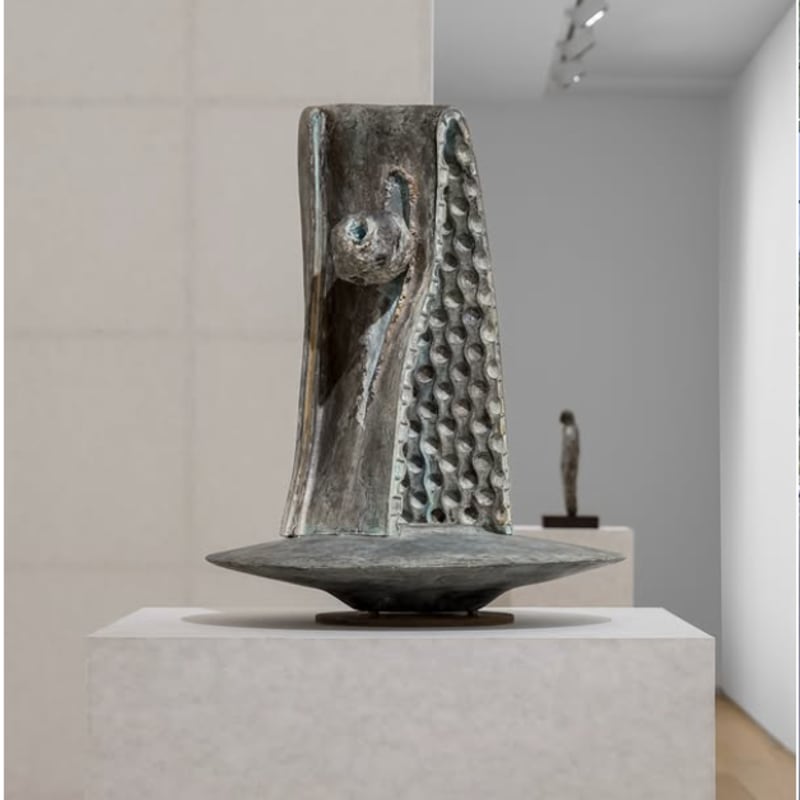

Martha Jungwirth
Overview
'My pictorial reality is charged with passion, a language tied to the body, to dynamic movement. Painting is a matter of form, and then it receives a soul – through me.'
Over the past six decades, Martha Jungwirth has forged a singular approach to abstraction that is grounded in the body and closely observed perceptions of the world around her. With an idiosyncratic, non-conformist approach to painting, her works occupy an intuitive space that exists beyond the formation of recognisable images, 'before spoken language', 'before memory' and 'before the obtrusiveness of objects'. The compositions reveal themselves to her during the painting process, which she describes as an 'adventure', creating in concert with her materials to produce works that are poised between chance and calculation.
In contrast to the rational principles of Minimalism and Conceptualism that emerged in the 1960s and 1970s, Jungwirth's paintings convey a palpable sense of self. As she has described, 'My art is like a diary, seismographic. That is the method of my work. I am completely related to myself. Drawing and painting are a movement that runs through me.' She draws upon 'pretexts' – personal encounters, international travels, art history, Greek mythology and political events – which become the triggers for fleeting, internal impulses that are recorded in paint and watercolour. Her process is a direct rhythm involving the body, with finger marks, scratches and even shoeprints remaining as a visceral record of her presence in the work. The vivid colour palette often dwells in a similarly corporeal register of fleshy pinks, blood reds and bruised magentas.
Over the past six decades, Martha Jungwirth has forged a singular approach to abstraction that is grounded in the body and closely observed perceptions of the world around her. With an idiosyncratic, non-conformist approach to painting, her works occupy an intuitive space that exists beyond the formation of recognisable images, 'before spoken language', 'before memory' and 'before the obtrusiveness of objects'. The compositions reveal themselves to her during the painting process, which she describes as an 'adventure', creating in concert with her materials to produce works that are poised between chance and calculation.
In contrast to the rational principles of Minimalism and Conceptualism that emerged in the 1960s and 1970s, Jungwirth's paintings convey a palpable sense of self. As she has described, 'My art is like a diary, seismographic. That is the method of my work. I am completely related to myself. Drawing and painting are a movement that runs through me.' She draws upon 'pretexts' – personal encounters, international travels, art history, Greek mythology and political events – which become the triggers for fleeting, internal impulses that are recorded in paint and watercolour. Her process is a direct rhythm involving the body, with finger marks, scratches and even shoeprints remaining as a visceral record of her presence in the work. The vivid colour palette often dwells in a similarly corporeal register of fleshy pinks, blood reds and bruised magentas.
The physical intensity of Jungwirth's tactile surfaces and eruptions of colour are balanced by her delicate sensitivity and restraint. The brushstrokes, splatters, stains and 'constellations of blotches' never overwhelm her chosen grounds, with areas of untouched cardboard or collaged paper playing a crucial role in the composition. The worn surfaces, frayed edges and pre-existing marks bear the traces of their past lives, whether paper rolls found in Nepal or the cardboard backing from frames. Once a mark is made, it cannot be unmade or glossed over, necessitating a painterly decisiveness. All traces of the artist's movements remain visible in the finished painting, as an intimate index of her process.
Jungwirth was born in 1940 in Vienna, where she continues to live and work. In 1961, while still a student at the Academy of Applied Arts (1956–63), she was awarded the Msgr. Otto Mauer Prize, followed by the Theodor Körner Prize (1964) and the Joan Miró Prize (1966). Having studied under Professor Carl Unger, she later taught at the Academy of Applied Arts in Vienna for a decade from 1967–77. She was a co-founder and the only female member of the Viennese collective Wirklichkeiten (Realities), alongside Wolfgang Herzig, Kurt Kocherscheidt, Peter Pongratz, Franz Ringel and Robert Zeppel-Sperl, whose work was shown in the exhibition at the Secession, Vienna in 1968, curated by Otto Breicha. The group exhibited together from 1968–72 and, in 1977, Jungwirth was included in documenta 6 in Kassel. More recently, an entire room was dedicated to her work in the exhibition curated by Albert Oehlen for the Essl Museum, Klosterneuburg in 2010. A career retrospective spanning five decades was shown at the Kunsthalle Krems in 2014, followed by an exhibition focusing on her watercolours at the Kunstmuseum Ravensburg in 2018. That same year, she received the prestigious Oskar Kokoschka Prize awarded by the Austrian state, accompanied by an extensive solo exhibition at the Albertina in Vienna. A retrospective at the Museum Liaunig in Neuhaus marked the occasion of the artist's 80th birthday in 2020. The following year, Martha Jungwirth was awarded the Grand Austrian State Prize, the Republic's highest commendation for an outstanding life's work in the field of art. In autumn 2022, the Kunsthalle Düsseldorf celebrated her work with an extensive solo exhibition spanning from the 1970s until today. In 2024, her works were the subject of a major retrospective at the Guggenheim Museum, Bilbao, followed by an exhibition at Long Museum, Shanghai, in 2025.
Videos





Artworks
Expositions
Catalogues

Martha Jungwirth

Martha Jungwirth

Safety Curtain is a project of museum in progress in cooperation with the Wiener Staatsoper and the Bundestheater-Holding, kindly supported in 2019 by the auction house im Kinsky and the PRIVAT BANK der Raiffeisenlandesbank Oberösterreich, with additional support of ART for ART, Barta & Partner and Bildrecht.

















































































































































































































































